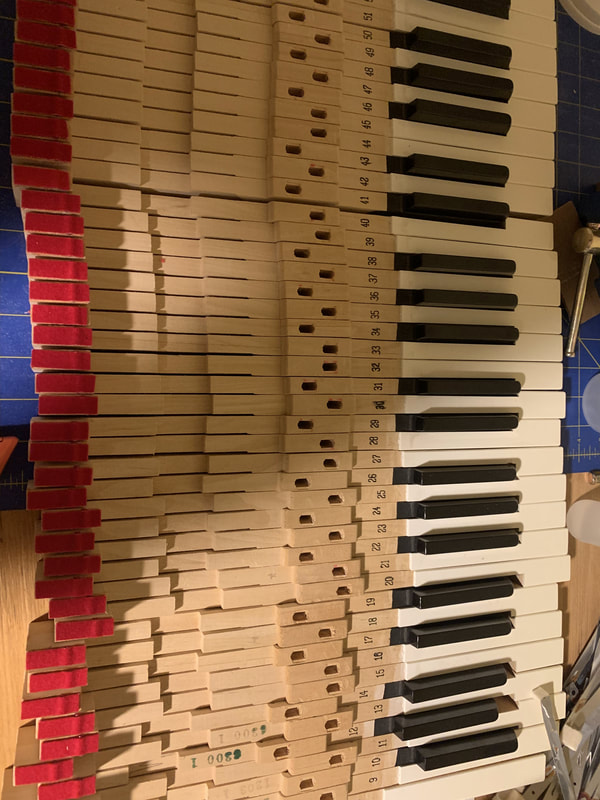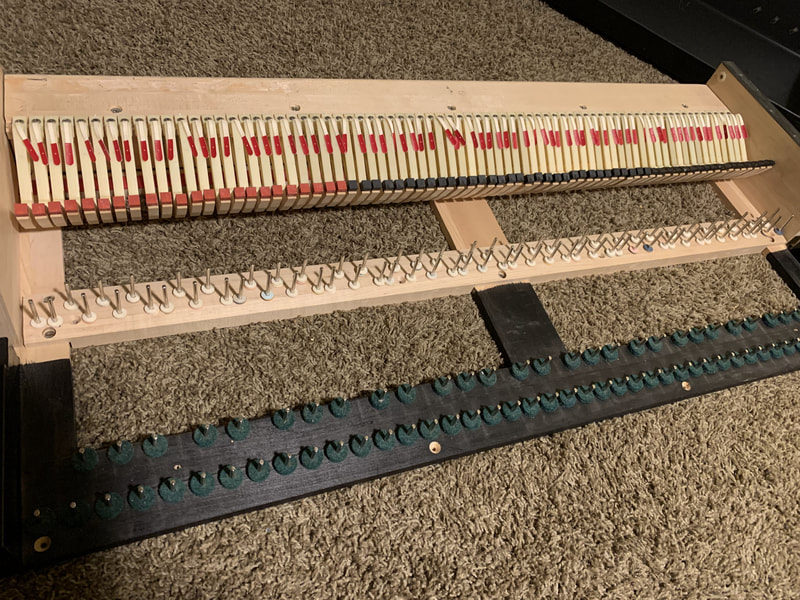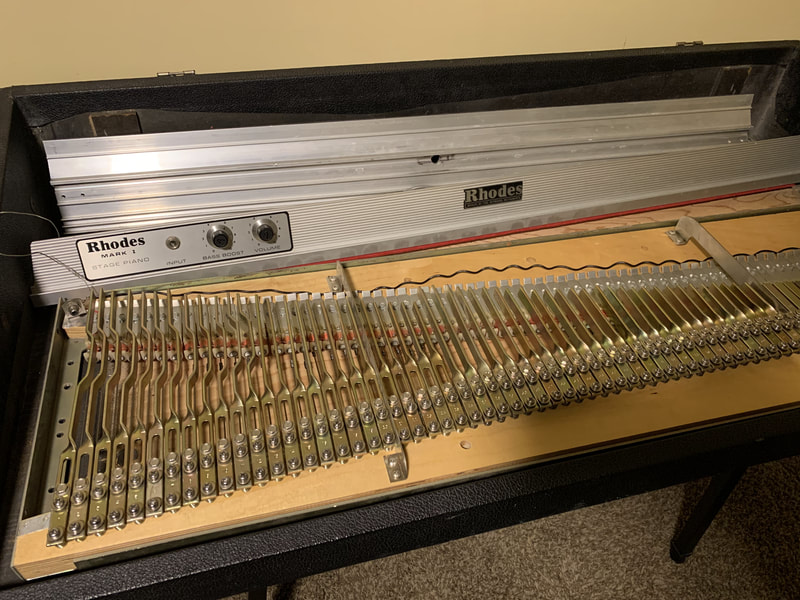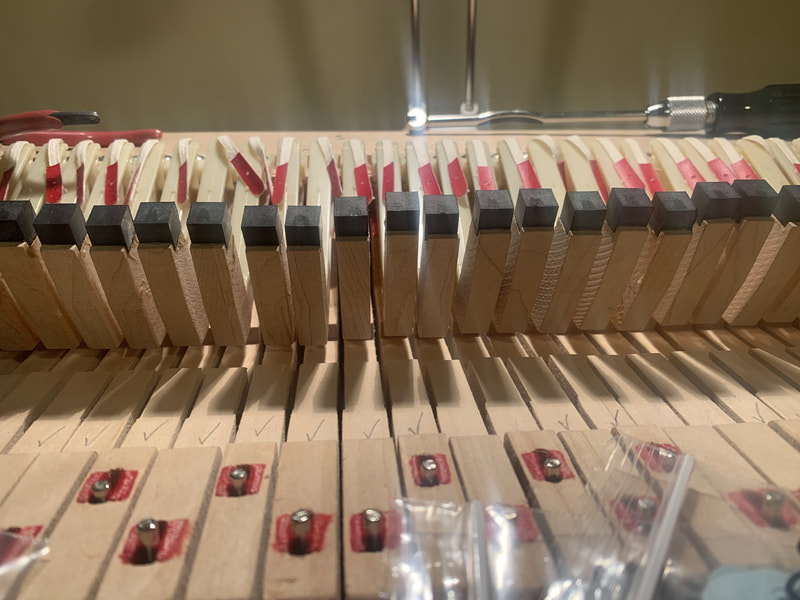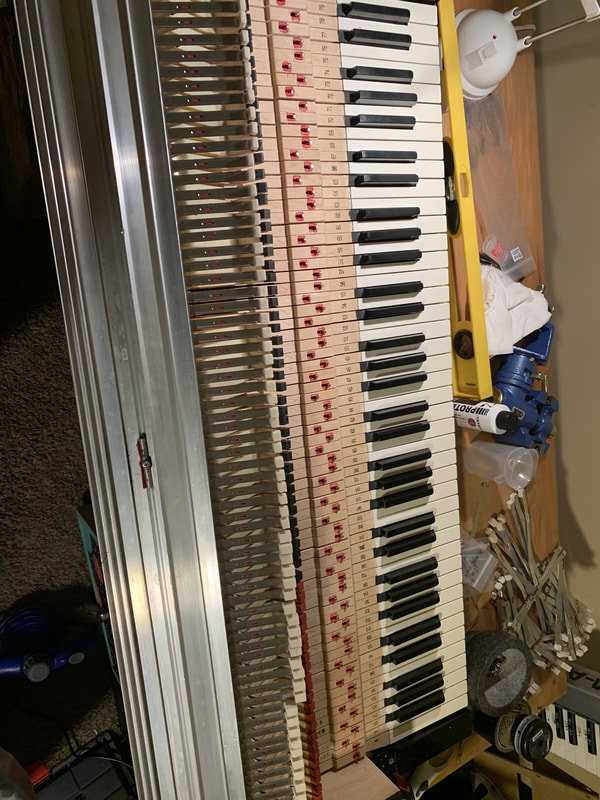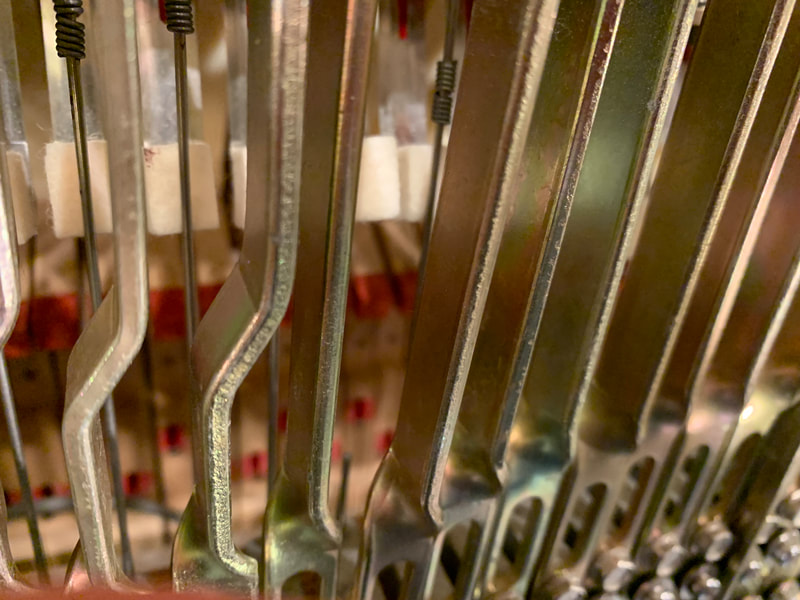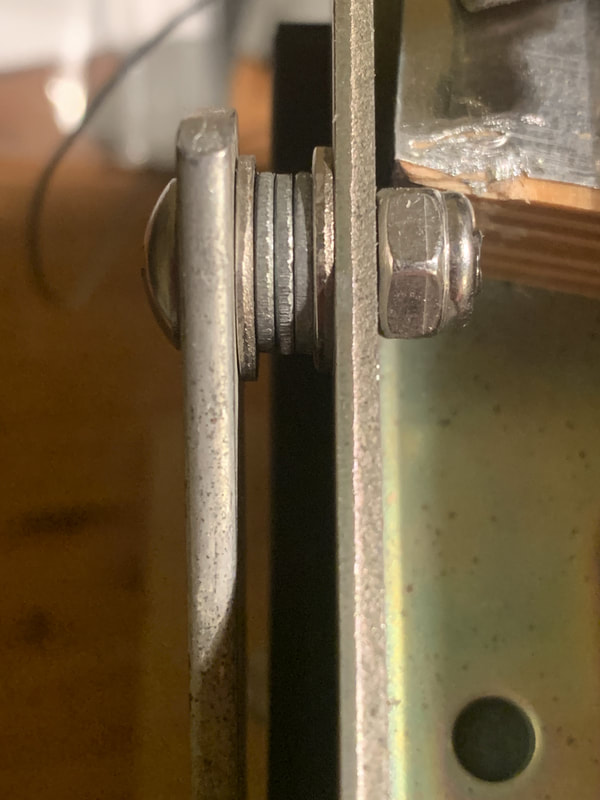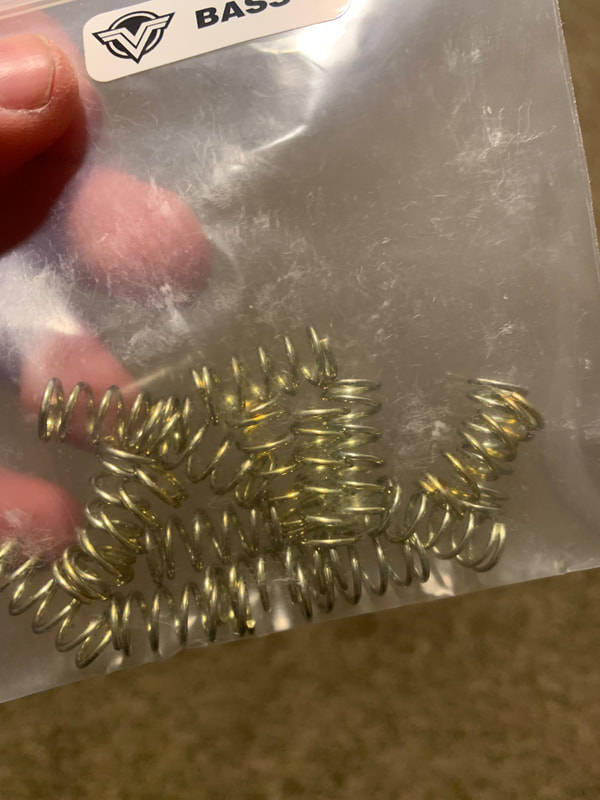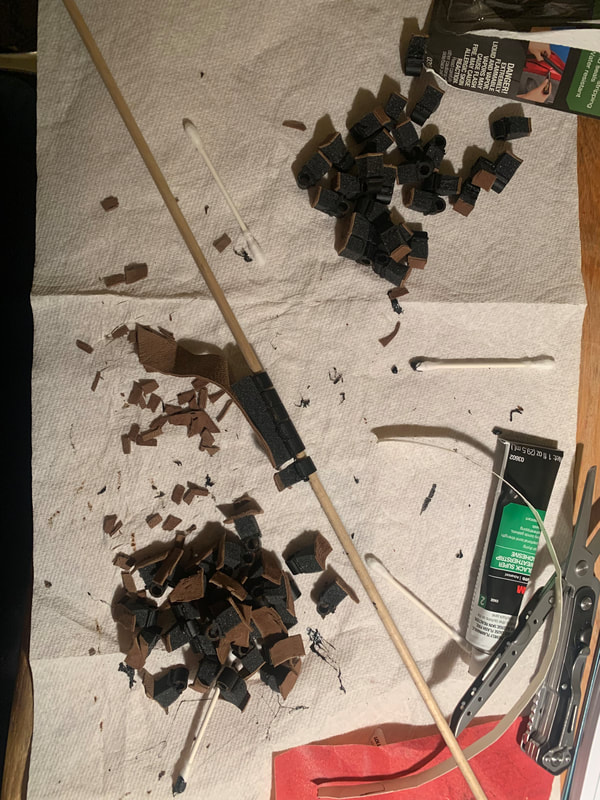AboutMy passion for pianos started a few years ago, when I had the realization that I would be playing piano my whole life, or as least as long as I physically can. I figured it would save me a lot of money over the years if I learned to tune, regulate, and repair them myself - that started me down the rabbit hole. Every single thing I learned showed me how little I really knew, and the complexity and logic behind all of it drew me in the same way music did. Read about my hobby projects on my own pianos below.
I play in a band called Endless Roulette; the pianos shown below are the ones I use for our shows. Look us up on most streaming services, or @endlessroulette on social media if you're interested! |
Electromechanicals: a fascinating class of pianos
The term 'electromechanical' refers to a type of electric piano that is very different from the digital piano keyboards that are very popular today. Unlike digital pianos (which play back recordings, or 'samples' of real instruments to make their sound) or synthesizers (which use complex electronic circuitry to generate sounds), electromechanicals have moving parts that hit a string or a tine (a piece of metal tuned to a certain pitch) to make sound. This makes them very similar to real acoustic pianos. The big difference between an acoustic piano and an electromechanical piano is the amplification. An acoustic piano has a soundboard, which is a large piece of wood that spans the length and width of nearly the whole piano, and acts like a diaphragm in a speaker - it vibrates sympathetically with the strings to make the sound much louder. An electromechanical has no soundboard, but uses passive pickups (like the ones on an electric guitar) to send the sound to an electronic amplifier. Electromechanical pianos can be played and heard acoustically, but they will be extremely quiet. Their true beauty and tone shines when they are plugged into an amplifier, much like an electric guitar.
The Fender Rhodes PianoThe Rhodes piano I own is a Mark 1 Stage from 1975, the 73-key version. I've done about 40 hours of work on it, consisting of minor repairs, lots of regulation, and tuning. Scroll through the gallery below to see my progress over this time.
|
The Baldwin ElectropianoThis electromechanical piano is a gem I hadn't heard about until I saw it on KSL for $200. I knew I had to buy it as soon as I played it for the first time. Very little information is available online about this piano, but from what I have read about it I believe it is the 'Student' model (there were 'teacher' models as well, these were built for teaching piano in a classroom setting). I have lots of work to do on this piano. Future projects include lots of regulation, building a carrying case around the current frame, and removing the old amplifier and speakers and putting them in a new cabinet.
The Hohner Combo PianetThe Hohner Combo Pianet is to the harpsichord what the Rhodes Piano is to the grand piano - a simplified version of the action, and metal tines or reeds that are plucked or struck in order to vibrate in front of a pickup rather than a string vibrating a soundboard. I found this one for a good deal and sold it for a profit, but I had to replace the sticky pads that pluck the reeds in order for it to function properly. I ended up making my own sticky pads, but I had to restart a few times until I got them right. See pictures below.
|

